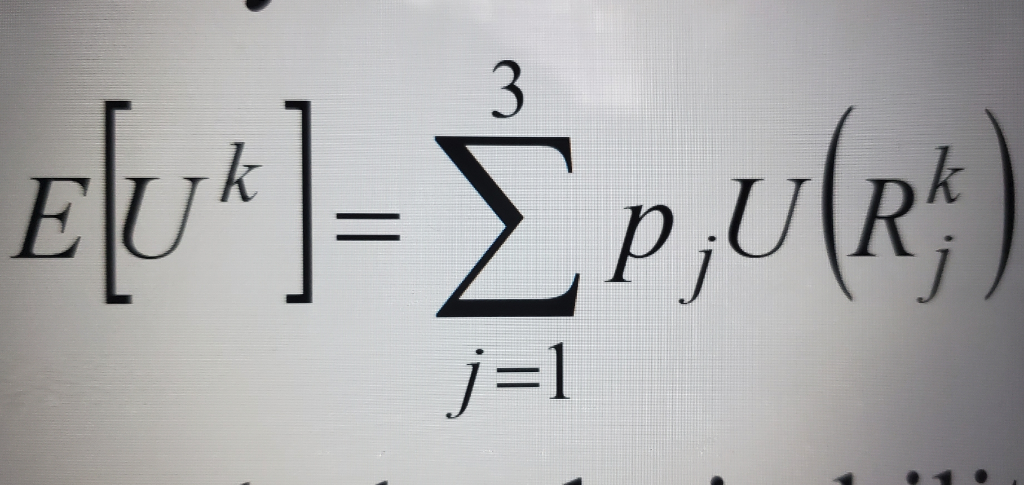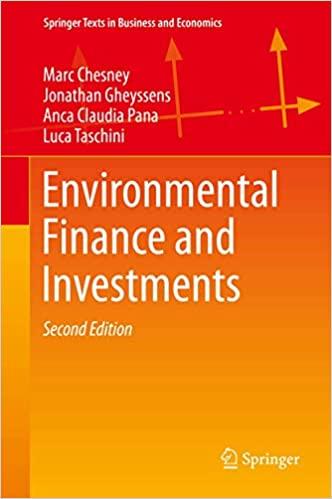Question
Suppose there are three possible states of the market, j=1 (good), j=2 (average), j = 3 (bad). Each R j B and R j C
Suppose there are three possible states of the market, j=1 (good), j=2 (average), j = 3 (bad). Each RjB and RjC, are given in the following table:
| State (j) | Pj | RjA | RjB | RjC |
| 1 | 1/3 | 0.34 | 0.20 | 0.10 |
| 1 | 1/3 | 0.10 | 0.10 | 0.10 |
| 1 | 1/3 | -0.10 | 0.00 | 0.10 |
From the table we see that asset C is a riskless asset with a sure return of 10%. Also, let the utility
function for the investor be U(R) = ln(1+R) where ln represents the natural log and R is the realized
return of an asset or portfolio.
a. Calculate the expected return and standard deviation associated with each asset.
b. Rank the three portfolios from least to most risky using an appropriate measure.
c. Show that for assets A and B, an investor always prefers a sure payment equal to the expected
return of that asset rather than holding the asset itself. For asset C, show that the investor would
be indifferent. Recall that as discussed in lecture, the expected utility associated with holding a
particular asset k = A, B, C is given by

d. Given your calculations in part c, rank the desirability of each asset according to the preferences
of the investor.
e. Suppose that a fourth asset, Asset D, is available and is a portfolio consisting of equal shares of
Assets A, B and C. Calculate the expected return and standard deviation of Asset D. Is it
preferred to Assets A, B and C? Explain your answer.
3 Eu*]-(*) i=1Step by Step Solution
There are 3 Steps involved in it
Step: 1

Get Instant Access to Expert-Tailored Solutions
See step-by-step solutions with expert insights and AI powered tools for academic success
Step: 2

Step: 3

Ace Your Homework with AI
Get the answers you need in no time with our AI-driven, step-by-step assistance
Get Started


